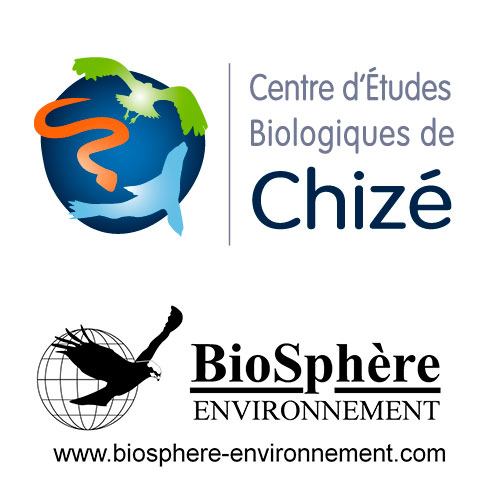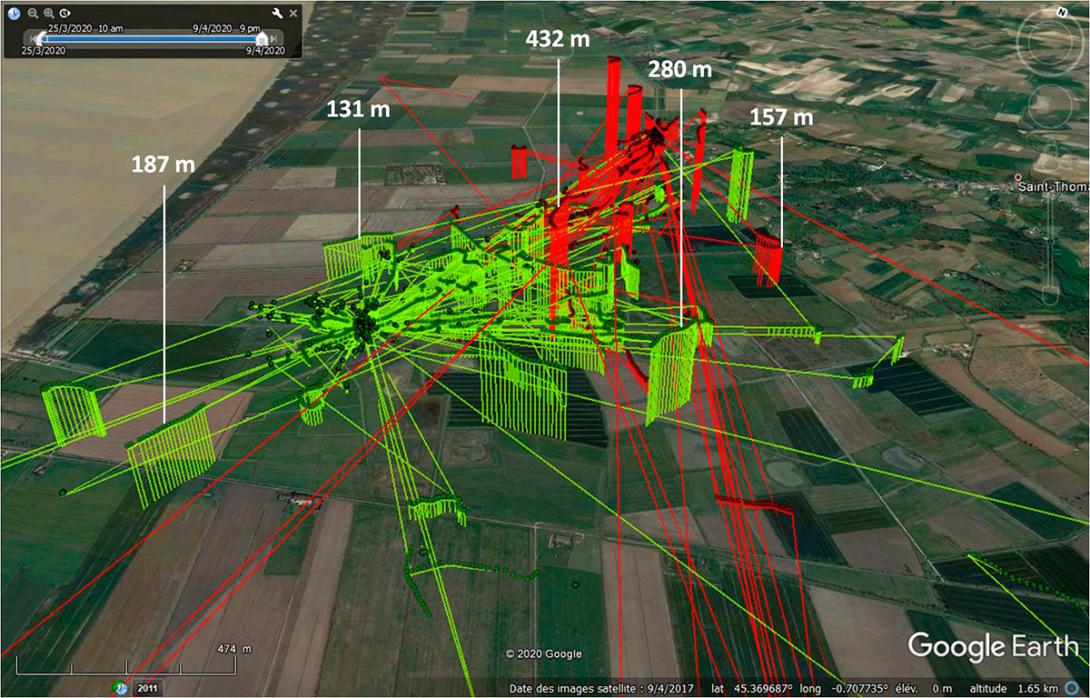BioSphère Environnement
Although the White stork (Ciconia ciconia) is listed as "Least Concern" on the Red List of the International Union for Conservation of Nature (IUCN) due to a significant overall population estimated at more than 700,000 individuals and currently on the rise, it is still impacted by the destruction of its habitat (loss of wetlands, industrialisation, expansion of agriculture), climate change (scarcity of food due to repeated droughts) as well as by the excessive use of pesticides.
During migration, it also suffers from fatal electrocutions caused by collisions with overhead power lines.

The department of Charente-Maritime has the largest number of white storks’ breeding pairs and fledglings in France, ahead of the departments of Haut-Rhin and Bas-Rhin. Today, it is home to about 15% of the French population, with more than 650 breeding pairs of which about 130 are permanently established in our department. This success can be explained by a favourable climate and an ideal habitat consisting of thousands of hectares of marshes where the storks find abundant food: small rodents, insects and especially the Spiny-cheek crayfish. This invasive crustacean, introduced in the environment by humans in the 1970s, is a real disaster for wetlands and in particular for fish and amphibian populations, but it constitutes an exceptional reservoir of food for storks, which they are particularly fond of.

BioSphère Environnement and the Centre d'Etudes biologiques de Chizé (CEBC) have initiated a research programme to better understand the migration and wintering strategies of storks by using GPS tracking. The data collected help documenting the different habitats used by the birds during their movements and studying how they adapt to different changes, either climatic or landscape, such as the drying up of wetlands. According to those in charge of the programme, "the situation of the white stork populations is closely linked to the state of conservation of the habitats they use".

The project of BioSphère Environment and the Centre d’Etudes Biologiques de Chizé, which has also been running an important research programme on the breeding biology of storks for a long time, also allows to raise awareness among a wide audience about the need to preserve this emblematic bird by helping people discover the white stork’s ecology and the environment it inhabits. Thanks to a specific mobile application, one can follow in real time the storks equipped with GPS devices and consult their last known positions. The birds are monitored during the breeding season, migration and wintering periods, with a specific study of their foraging behavior thanks to the motion sensors embedded in the transponders (accelerometers). For now, 13 storks have been equipped with GPS devices collecting information on their geographical position, altitude, speed and temperature. The aim is to tag more birds with transmitters in order to increase the number of data collected and to better understand how the storks are adapting to the changes of their environment.